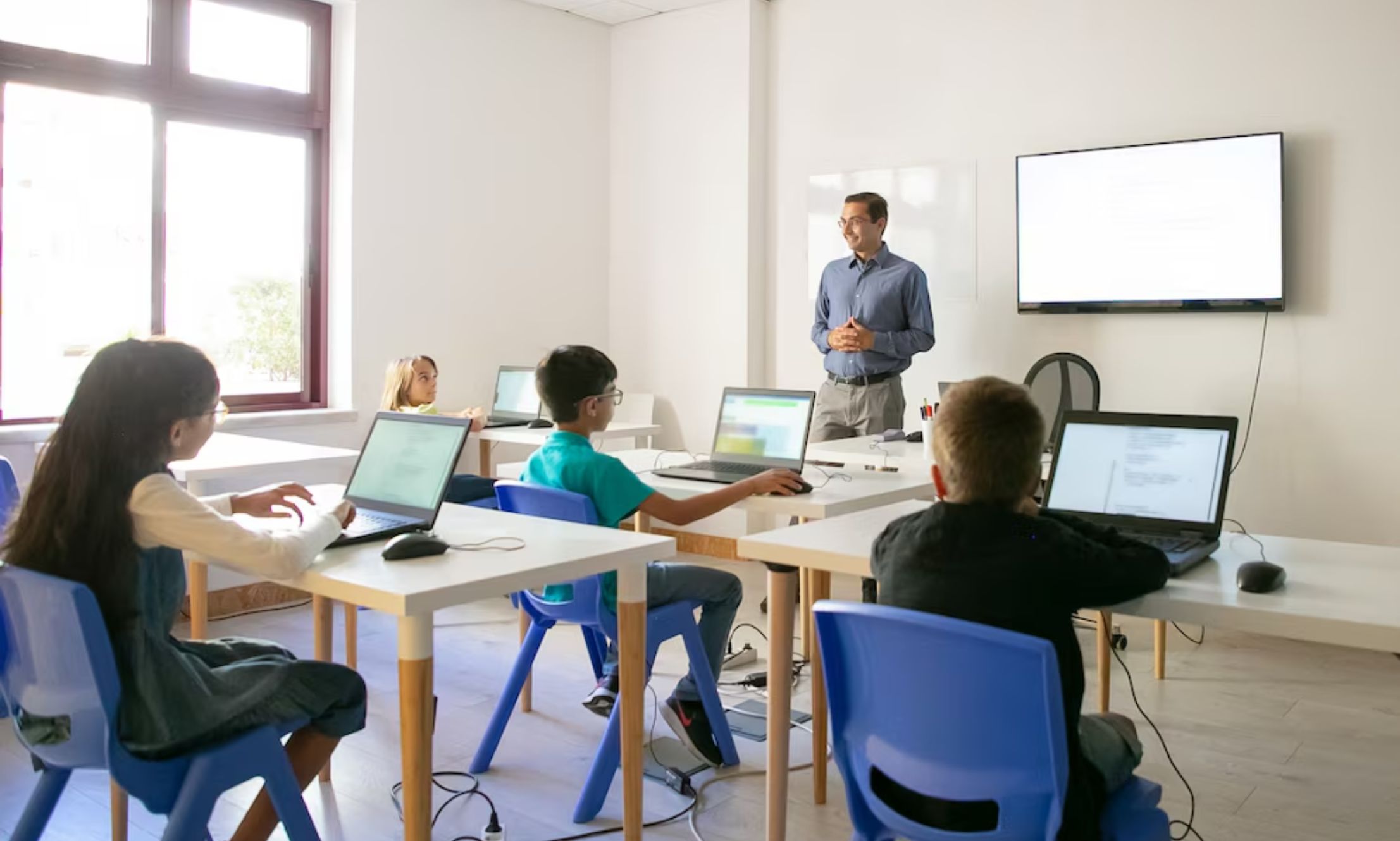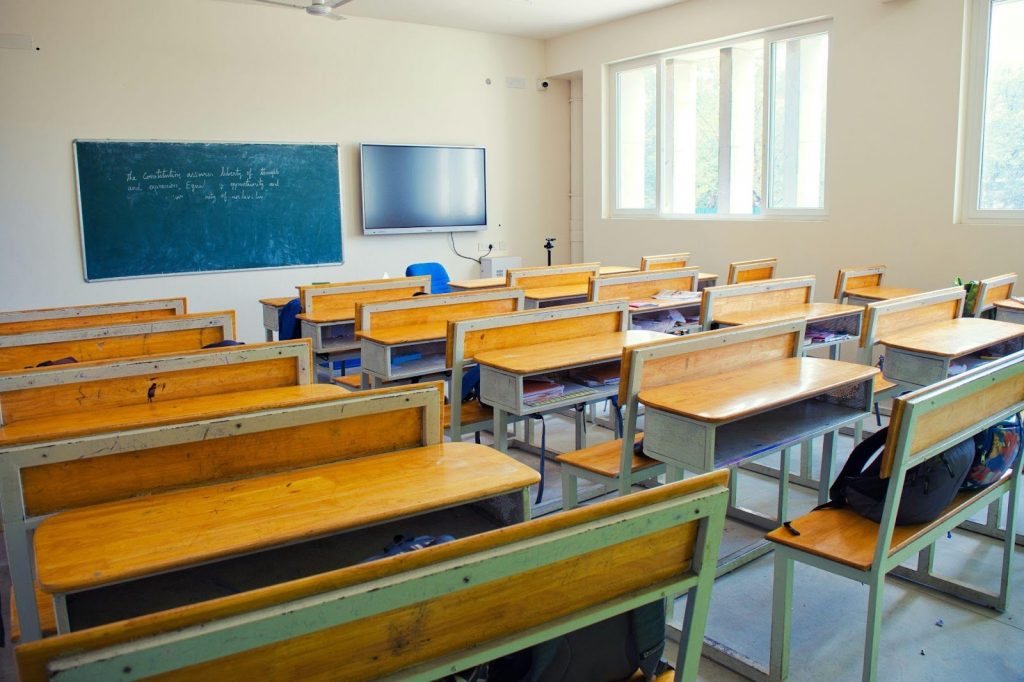What’s in a Well-Equipped Classroom? More Than You Think
11 April 2025
6 Mins Read

toc impalement
| Key Takeaways: ‣ A well-equipped classroom goes beyond the basics to support diverse learning styles and emotional well-being. ‣ Smart layouts, flexible seating, and inclusive design make learning environments more effective for all students. ‣ Investing in quality materials reduces stress and enhances classroom flow and engagement. ‣ Small, overlooked additions—like noise control tools or mindfulness corners—can have a big impact on daily teaching. |
You probably remember the first time you set foot in your classroom—empty bulletin boards, a pile of supplies on your desk, and a mix of excitement and pressure bubbling up inside.
Whether you are a new teacher or a seasoned pro, one constant always finds its way onto your back-to-school checklist: getting the classroom ready.
But here’s the thing—what does “ready” even mean these days?
The image of a well-equipped classroom used to be straightforward. A whiteboard, rows of desks, a good stash of markers, and a bookshelf or two. Done, right? Not anymore.
Today’s classrooms are dynamic spaces designed to engage different learning styles, nurture emotional well-being, and spark curiosity. And if you’ve ever looked around your room and felt like something was missing, you’re not alone, despite ticking every box on the supply list.
Let’s dig into what makes a classroom feel whole. Spoiler alert: It’s not just what’s in the supply closet.
Beyond the Basics – What a Well-Equipped Classroom Truly Needs

Most educators know the classic list–pencils, notebooks, construction paper, glue sticks, and scissors. These are some of the essentials, but these just touch the surface of what a classroom actually needs these days.
Today’s learning needs an environment that is shaped by movement, inclusivity, and collaboration. Flexible seating like floor cushions, bean bags, and wobble stools can change how students interact with the lessons.
Smartboards and tablets are not just flashy technology. They are tools that help with multimedia learning, accessibility features, and real-time collaborations. Digital learning is something that every classroom needs these days.
It helps students learn at their own pace and in the best way. Classrooms are no longer just spaces where learning happens—they’re where relationships form, identities are shaped, and kids feel seen. And that can’t happen with just a stockpile of lined paper and crayons.
Teachers know that what works one year may need a total rethink the next. Curriculums change, student needs shift, and what felt “equipped” last semester might not cut it anymore. The key is flexibility—both in mindset and in your tools.
The Role of Quality Tools in Empowering Teachers
There’s a reason veteran educators are choosy about their supplies—and it’s not just about aesthetics. When your tools work with you instead of against you, everything changes.
Think about the difference between a pen that skips and one that glides. One adds friction to your day; the other keeps the ideas flowing.
That’s why more teachers are turning to premium school supplies for educators—not as a luxury but as a wise investment in their workflow. High-quality materials hold up longer, feel better in hand, and often come with thoughtful design touches that streamline teaching.
Whether it’s durable storage that saves you from re-buying bins every semester or markers that don’t dry out halfway through a lesson, the benefits are practical and psychological.
Take Anna, a fifth-grade teacher who made the switch after years of wrestling with warped rulers and tangled cords. She upgraded her materials slowly, starting with just a set of magnetic labels and an ergonomic chair.
The change was instant, not just in how her classroom functioned, but in how she felt showing up every day. Less stress, more flow.
Let’s not forget that quality tools also communicate something powerful to your students. When your classroom is filled with intention, students pick up on it. They start to take more pride in their environment and, often, more ownership of their learning.
Creating a Space That Works for Everyone
Think about the physical layout of your classroom for a second. Are students encouraged to move, explore, and engage? Or is the space more of a one-size-fits-all setup that works well for some but not all?
Designing a space that works for everyone doesn’t require a total renovation. Sometimes, minor tweaks—like rearranging desks into clusters or adding a corner for quiet focus—can make a huge difference in how students experience the room.
Visual learners may benefit from wall displays and anchor charts; others might need tactile tools or space to stand while working.
Inclusivity plays a huge role here, too. That means considering students who are neurodiverse, easily overwhelmed by noise, or need extra structure to stay grounded in their environment.
Calm lighting, noise-dampening headphones, and simple visual schedules can be game-changers for students who don’t always thrive in traditional settings.
Then there’s storage—maybe not the most glamorous topic, but wildly important. Clear, labeled bins save your sanity and teach students independence.
When they know where everything is (and where it goes), they spend less time asking and do more. That kind of autonomy creates a smoother classroom rhythm and boosts student confidence.
Your classroom should feel like it’s working with you, not against you. It should flow and flex, and it should also be a space where students can find a rhythm that works for them.
Overlooked Essentials That Make a Huge Difference
Some classroom heroes don’t get nearly enough credit. We’re talking about the little tools and ideas that tend to fly under the radar—but once you’ve tried them, you never want to go without them again.
Take cable organizers, for example. They might not seem like a big deal until your charging station turns into a spaghetti mess, and you’re untangling cords instead of teaching.
Or soft floor tiles that cushion your feet during long standing stretches at the front of the class—goodbye, teacher fatigue. Even something like a handheld whiteboard for quick student check-ins can change the pace of your day.
Mindfulness corners are another quiet revolution. A beanbag, a few sensory items, maybe a timer—a simple setup—gives students a safe space to reset when things get overwhelming. It also sends a message that emotional health matters, which is just as important as academic progress.
Let’s not forget about air quality. A small air purifier or a few low-maintenance plants can do more than just freshen up the vibe—they can create a healthier learning environment, especially during cold and flu season.
You don’t need to blow your budget on all the extras. In fact, many of these small additions are affordable, durable, and teacher-tested.
The real trick is noticing what slows your day down or where students seem to lose focus and finding the tiny tool that shifts that energy. Sometimes, it’s not about adding more—it’s about choosing smarter.
Conclusion: Rethinking What a Classroom Really Needs
A certain magic happens in a classroom that just feels right. It’s not always flashy or high-tech, and it’s not about how many bins or bulletin board borders you have. It’s about how the space functions—how it supports the energy, curiosity, and complexity of the people inside it.
A well-equipped classroom isn’t a static checklist of supplies. It’s a living, evolving environment shaped by the moment’s needs and the teacher’s vision guiding it.
Whether you are rethinking your layout, upgrading your materials, or tackling the tangle of tech cords in the corner, every small shift matters.
More than anything, it’s about intention. The care you put into your space radiates out to your students, your teaching, and the culture of learning you build daily.
And when your classroom works for you, you’re freer to focus on what matters most: helping students grow, learn, and thrive.

















